A Brief History of CC41-The Utility Clothing Scheme
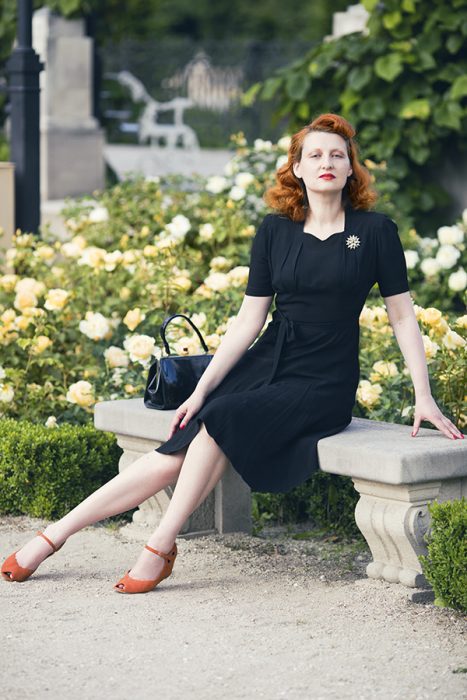
Last updated on May 23rd, 2024 at 02:22 pm
- CC41 Lingerie Examples
- My Book Recommendations on Utility Clothing Scheme & Rationing During WWII in Britain.
- Other Research Sources on Utility Clothing Scheme
- A Brief History of CC41-The Utility Clothing Scheme
- THE EXACT DATE OF THE CLOTHING RATIONING ORDER IN BRITAIN
- THE INTRODUCTION OF COUPONS IN THE UK
- Examples of coupons needed for a particular garment in the years 1941-1944
- 60 Additional Coupons for Expecting Mothers
- The Exemptions from Extra Coupons
- History of CC41 Logo
- The IncSoc
- New Restrictions on Styles in Britain During WWII
- Women’s Underwear & Nightwear During WWII
- Women’s Dress Sizes During WWII
- AUSTERITY REGULATIONS FOR UTILITY AND NON-UTILITY CLOTHES WERE INTRODUCED IN MAY, 1942.
- EXAMPLES OF AUSTERITY REGULATIONS
- The Utility Fur Garments!
- CLOTHES UNDER THE UTILITY CLOTHING SCHEME FIRST APPEARED IN THE SHOPS IN FEBRUARY 1942.
- DECODING THE CODE- History of CC41
- ABOLITION OF CLOTHES RATIONING
- THE END OF THE UTILITY CLOTHING SCHEME – 1952
History of CC41-The Utility Clothing Scheme
A brief history of CC41-The Utility Clothing Scheme with examples of CC41 clothes from my personal collection.
I’ve been fascinated by the history of CC41 – The Utility Clothing Scheme in Britain for years and I have a very strong penchant for buying garments with the CC41 logo, even multiples of the same item.
What can I tell you, I can never resist, yet another pair of 1940s knickers or teddy. It’s simply beyond my control!
Considering my large, and yet, still growing collection of clothes and lingerie bearing the CC41 tag, some might say that I’m a little bit obsessed with it. I, however, prefer the word passionate.
CC41 Lingerie Examples

Just a sample of my 1940s lingerie collection bearing the CC41 mark. A brief history of CC41 – The Utility Clothing Scheme
History of CC41. In the picture, I’m wearing a teddy (camiknickers) and knickers with the CC41 mark.
And yes, you wouldn’t normally wear knickers on top of a teddy but I wanted to show both pieces in one picture. @Gregory Michael King
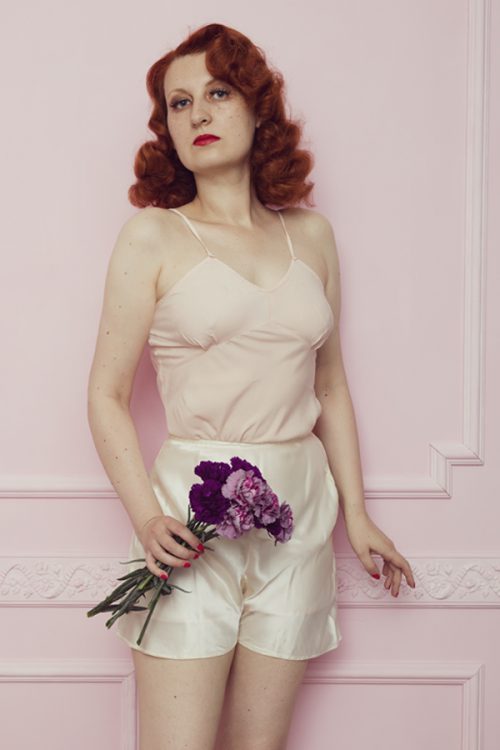

A brief history of CC41-The Utility Clothing Scheme. CC41 teddy and knickers paired with a 1930s kimono robe from the Queen of vintage lingerie Dames and Daggers.
On my feet, are the sumptuous French Sole velvet slippers. Copyright: Gregory Michael King
CC41 Celanese lingerie, July 1945 advertisement. Picture courtesy of Emma of Nylon Nostalgia.
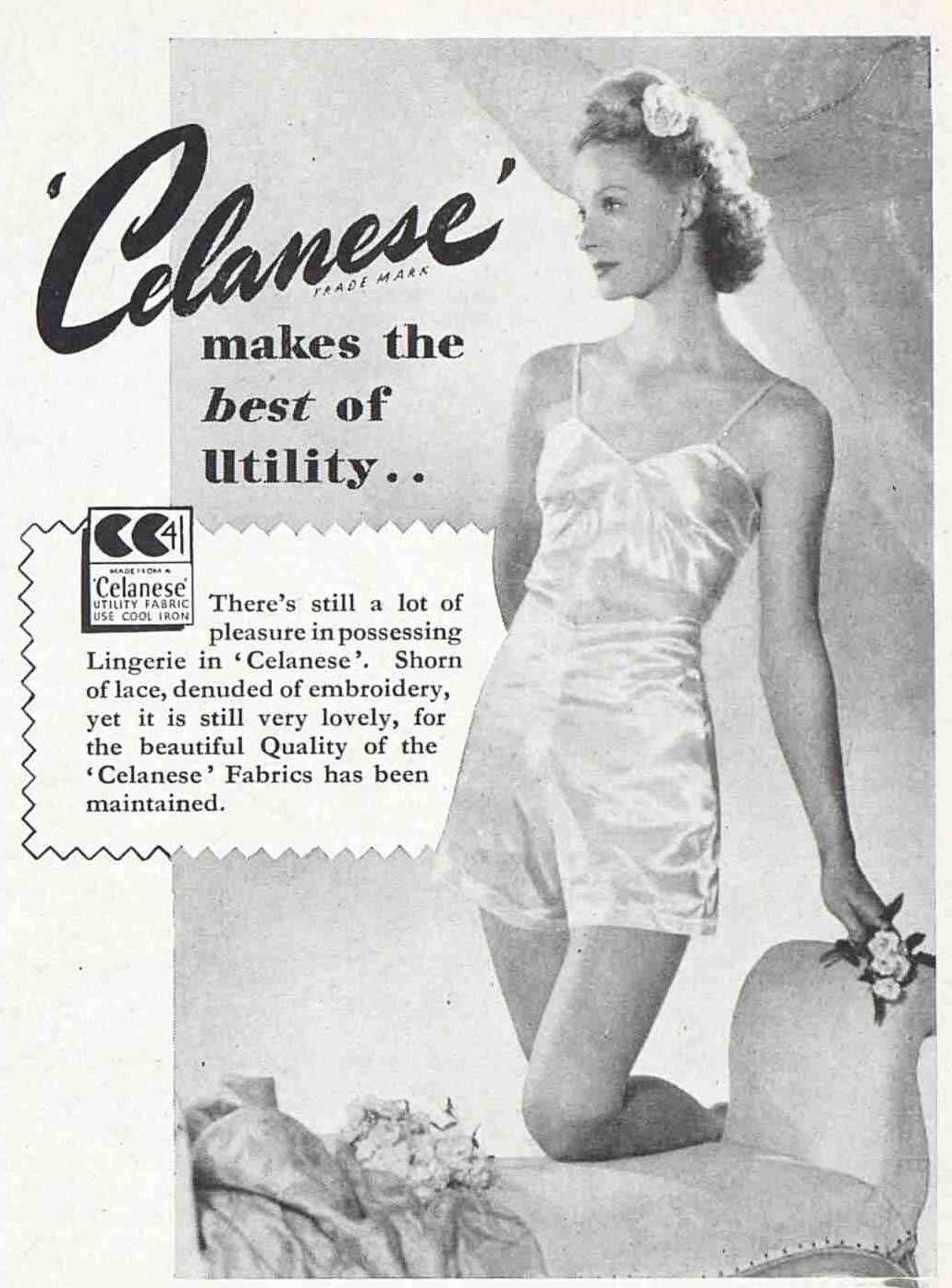
And speaking of Emma, she has just published a wonderful post about CC41 stockings by Plaza Hosiery Ltd!
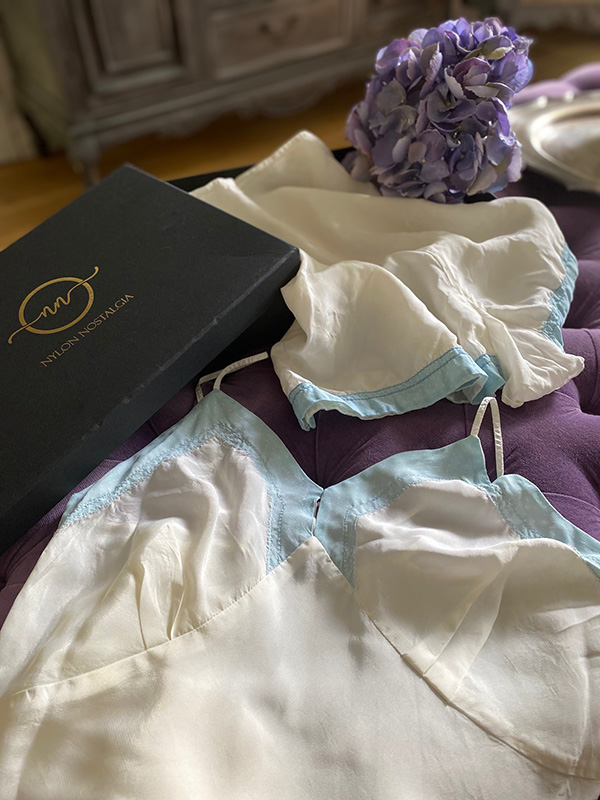
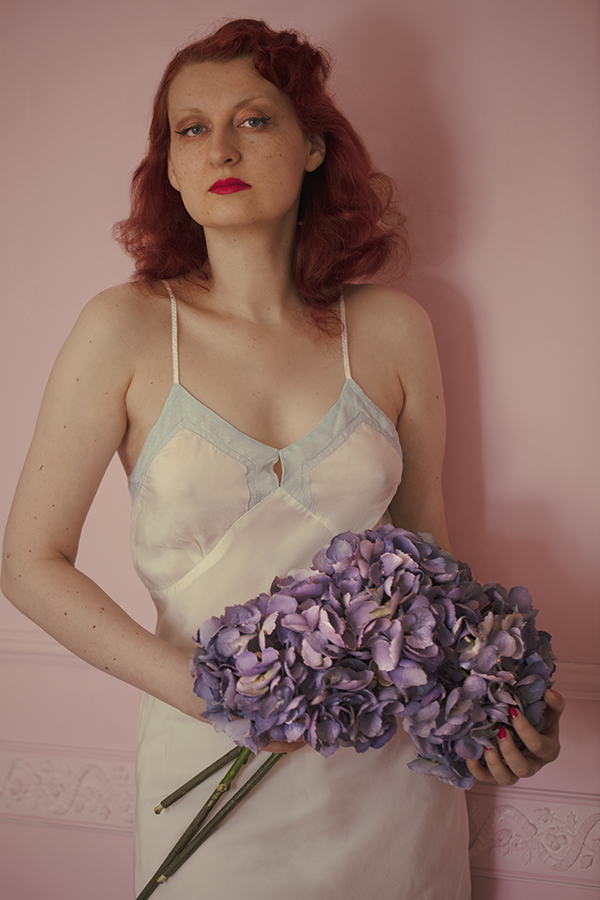
There are many wonderful, well-researched books about the Utility Clothing Scheme in Britain. So why the need for yet another post about CC41, you may ask?
Well, the reason why I decided to venture bravely into writing an article about a subject that has been covered by some of the best fashion historians is to give a short but backed up by facts, the history of one of my favourite topics.
I sincerely hope that my little post will pique enough of your interest so that you shall succumb to reading at least one of the books I mentioned below.
My Book Recommendations on Utility Clothing Scheme & Rationing During WWII in Britain.
These, in my humble opinion, are the best of what’s available on the market.
DISCLOSURE: As of 2021, one year after this article was published, I’m part of an affiliate program, and I get a small commission for purchases made through links in this post. That’s how I keep my website alive, for which I’m very grateful to you. Shopping via my affiliate links comes at no additional cost to you. All opinions expressed here are mine!
Fashion on the Ration by Julie Summers

Forties Fashion: From Siren Suits to the New Look by Jonathan Walford * This is my favourite book about 1940s fashion, and I highly recommend it to anyone with an interest in the era.

Wartime Fashion: From Haute Couture to Homemade, 1939-1945 by Geraldine Howell
CC41 Utility Clothing: The Label that Transformed British Fashion by Mike Brown
Other Research Sources on Utility Clothing Scheme
- Imperial War Museum in London has a vast collection of photographs of Utility clothes as well as the actual clothes and accessories bearing the CC41 mark.
- UK Parliament-The Parliamentary Archives
- The National Archives in Kew
I’ve been very thorough with research on the Utility Clothing Scheme, like with all of my articles, and as always, I left no stone unturned. Unfortunately, due to COVID-19, and implemented restrictions, I was unable to visit The National Archives, based in Kew in order to confirm certain information.
Sadly, not everything is digitalized, at least not the documents I was looking for. I will, however, be updating this post in due course so please bear with me. During my research, I stumbled across a lot of mixed-up dates, so I’ve decided to focus on finding the source of all my data and posting it here.
A Brief History of CC41-The Utility Clothing Scheme
THE EXACT DATE OF THE CLOTHING RATIONING ORDER IN BRITAIN
HC Deb 10 June 1941 vol 372 cc9-109
§Mr. Lyttelton
“The Order was signed in the afternoon of Thursday, 29th May, and came into operation on 1st June. Notice of the Order was sent to the Press on the morning of 31st May with an instruction in regard to the hour of publication, which was fixed for Sunday morning, 1st June. I had a confidential conference with the Editors of the principal newspapers in the afternoon of 30th May, as is the normal custom, and on this, as on other occasions, there is no evidence whatever of any breach of confidence.”
THE INTRODUCTION OF COUPONS IN THE UK
A brief history of CC41-The Utility Clothing Scheme

Every Brit received initially 66 clothing coupons to last for a year. This was to allow every person to buy only necessary garments and prevent wastefulness amongst the more well-to-do class. The Board of Trade issued a Notice to the Public asking Brits to make do and not buy more clothes than they absolutely had to.
People realised early in the days of clothing rationing the value of their precious coupons. The wealthy spent the same amount of coupons on good quality clothes, such as coats, suits, and dresses, as did the less well-to-do ones on clothes that would wear out in a short period of time.
The Utility Clothing Scheme was designed to offer quality control of cloth and clothing at a reasonable, controlled price. The coupon system was very complicated and the HMSO had to publish ” The Clothing Quiz” every year in order for people to make any sense of it.
Examples of coupons needed for a particular garment in the years 1941-1944
- a women’s coat required 14 coupons to be surrendered.
I found an example in “Fashion on the Ration” by Julie Summers, that a Winter coat would take as many as 18 coupons and a thick dress, up to 11. The number of coupons issued every year was significantly smaller than the previous one. In 1942 the clothes ration book had 60 coupons instead of 66, and the number went down to 48 coupons to last 12 months. By August 1944 the British public had to survive on 41 coupons and that was not an easy task.
- 7 coupons for a skirt
- 3 coupons for knickers
*10 Industrial Coupons for Factory Workers
HC Deb 10 September 1942 vol 383 c325W325W
§Major Profumo
“asked the President of the Board of Trade whether, in view of the fact that in certain factories some workers are entitled to extra clothing coupons for the purpose of obtaining overalls and others, although employed on similar jobs, are not entitled to this concession, he will consider making an arrangement whereby the factory management may be issued with coupons for the use of employees employed on jobs that cause exceptional wear to their clothes?”
§Captain Waterhouse
“As my right hon. Friend stated in the House on 17th March, it is intended in the present rationing period to issue a flat-rate allowance of 10 extra coupons to a wide range of industrial workers, and I believe that this will meet most of the difficulties to which my hon. and gallant Friend refers.”

The Boart of Trade have agreed to issue coupon funds to employers, enabling them to purchase protective clothing clothing for loan to certain men and women engaged intermitenly on dirty jobs outside their normal duties.
The Scotsman, Thursday, April 16, 1942
60 Additional Coupons for Expecting Mothers
HC Deb 06 July 1943 vol 390 cc1942-3
Mr. Dalton
“An expectant mother is entitled to 60 supplementary coupons and, in addition, to a ration for her child, as soon as it is born. I regret that, in present supply conditions, I could not justify a further supplementary issue.”
It’s important to note that not everyone received extra coupons for overalls.
For example;
HC Deb 12 December 1946 vol 431 cc257-8W
Sir S. Cripps
“Shop assistants handling unwrapped food are allowed ten extra coupons because they must wear overalls on hygienic grounds. There would be no such reason for allowing the supplement to counter assistants in chemists’ shops.”
The Exemptions from Extra Coupons
Not everything was rationed however, hats, for instance, were exempt but they came at a price that many could simply not afford.
Clothes rationing did not bring enough savings which lead to the birth of the Utility Clothing Scheme and the austerity regulations of May 1942.

A Brief History of CC41-The Utility Clothing Scheme
History of CC41 Logo
CC41 UTILITY CLOTHING SCHEME
The Board of Trade have no wish to adopt the role of fashiondictator…the Board recognises, however, that the art of styling belongs essentially to the clothing industry and the encouragement of good styling is one of the ways in which the Government can assist that industry.
Board of Trade press notice, 12 May 1942
The CC41 logo designed by Reginald Shipp stood for Civilian Clothing Orders 1941. I’ve seen it many times referred to as a Controlled Commodity. The tag appeared on all clothes made of Utility cloth and symbolised good quality for a reasonable price. In theory at least.
Despite what you might have read or heard, the Utility Clothing Scheme was not well received. And it had nothing to do with the quality of fabrics or the actual designs. After all, the public had not seen any examples of utility garments for several months from the initial announcement.
The word Utility had a very negative connotation and the public associated it with something rather sombre, standardised and definitely not fashion-forward. That, of course, couldn’t be further from the truth, as there was no restriction on colour or pattern. To convince the public that Utility clothes were as good as non-utility, the government asked fashion editors to help to get the message across which was at least partially achieved.
The garments are styled and made from constructed on specified lines or price-stipulated by the Board of Trade. The margin of profit is controlled at every stage. Utility represents reliable value; but of course, there’s no control over style.
Draper’s Record, 14 March 1942, p.37
The first Utility clothes that appeared in shops failed to make an impression on the buyers and the quality of clothes left a lot to be desired. The Board of Trade had to implement much stricter specifications and quality control tests. On a side note, all of my Utility clothes, in particular, the Winter skirts and suits seem to be of the highest quality. Hence my obsession with buying CC41 fashions.
In order to attract and persuade the public to choose Utility over non-Utility clothes, The Board of Trade commissioned IncSoc.
The IncSoc
The Incorporated Society of London Fashion Designers ( IncSoc) was founded in 1942 to promote British designs abroad. The members included the most prominent British couturiers:
- Norman Hartnell – dressmaker to the Queen
- Digby Morton
- Peter Russell
- Victor Stiebel
- Bianca Mosca
- Elspeth Champcommunal – chief designer for Worth London
- Hardy Amies
- Edward Molyneux
- Charles Creed.
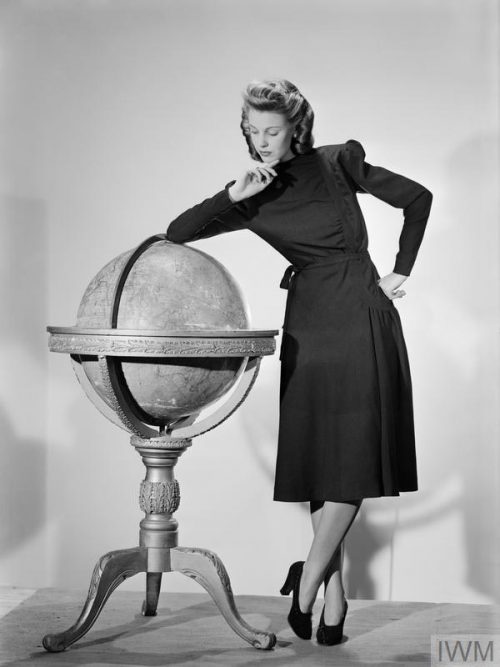
UTILITY CLOTHES: FASHION RESTRICTIONS IN WARTIME BRITAIN, 1943 (D 14826) A model leans on a large globe as she shows off her black woollen Utility Atrima dress, costing 11 coupons.
Copyright: © IWM. Original source: IWM- CLICK ON THE IMAGE!
CC41 dress, similar to the Atrima dress, I purchased two years ago!
Unfortunately, the said dress was shipped by USPS to Saudi Arabia instead of the EU, and I haven’t been able to retrieve it from the Saudi post!!!

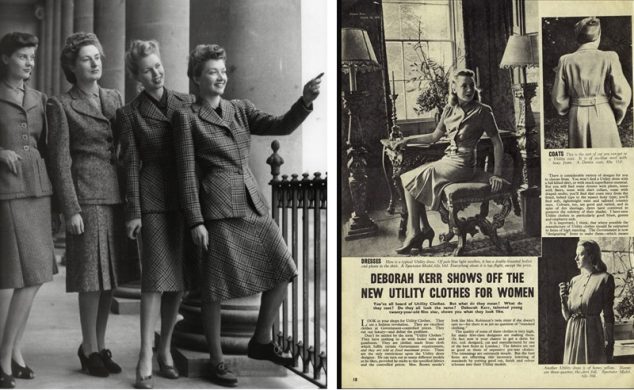
In the picture on the left, Utility versus Non-Utility clothes. Can you spot the difference? In the photograph on the right, Deborah Kerr is modelling Utility clothes. Source; Pinterest
A beautiful example of clothes under the CC41 Utility Clothing Scheme. Source; Pinterest
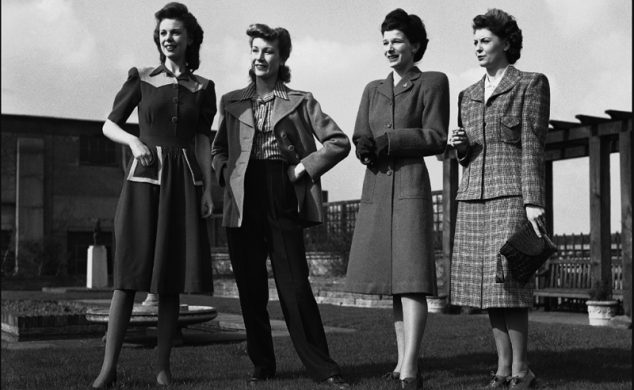
Each of the participating couturiers was to design a dress, a skirt suit and a coat made of Utility cloth and under strict austerity regulations, 32 designs in total. All garments were meant to be fashionable, practical, suitable for all seasons and ready for mass production. Manufacturers who commissioned their own stylists were less than thrilled about the idea and felt resentment
Unfortunately, since the designs were not signed by the couturiers, the buyers had no way of knowing who designed them. Also, the IncSoc Utility collection didn’t differ much from the already existing fashions of military-inspired jackets and pleated skirts.
In 1942 the President of the Board of Trade gifted the prototype Utility clothes designed by IncSoc to the V&A. You can see an example of a Utility skirt suit designed by Digby Morton who left his initials on a paper tag.
A wonderful example of the new to me 1940s CC41 skirt suit made by Jancourt Sports.
The beauteous 1940s skirt suit is my latest addition to the growing CC41 collection. I paired it with a 1950s purse and Wolford tights. Nothing better for colder weather than a vintage suit made of great-quality wool!
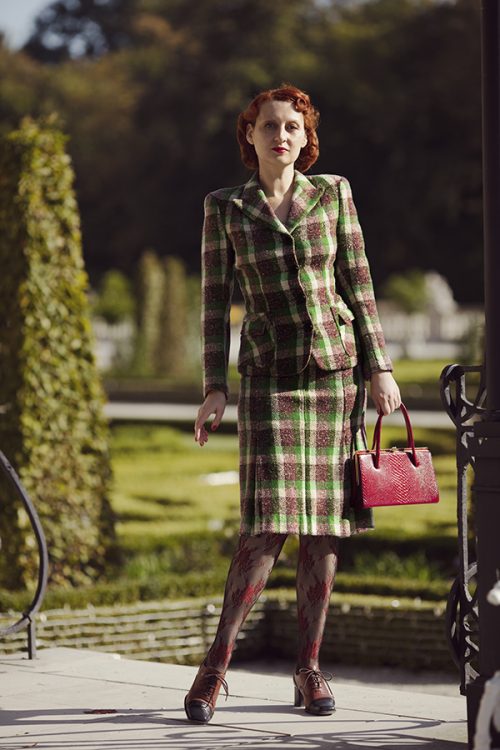

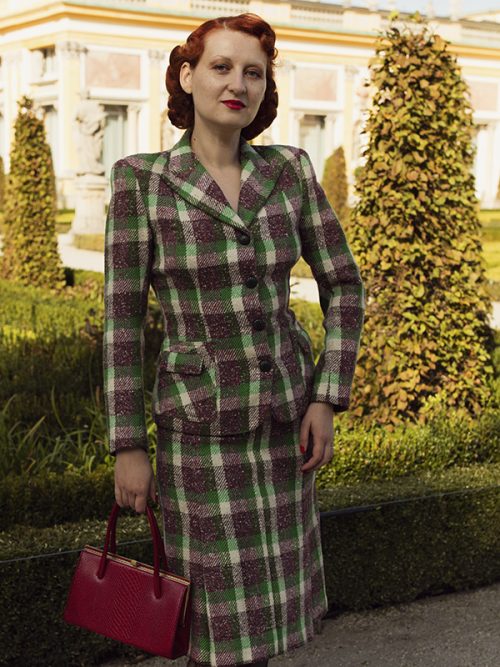
New Restrictions on Styles in Britain During WWII
Big thank you to my beloved Emma, the founder of Nylon Nostalgia and expert in vintage lingerie, for the press clippings from 1942!

The new regulations apply at once, but bespoke garments ordered before April 16 and cut before May 18 may be completed. The same applies to made-up garments cut for stock before May 18. The Order applies to utility and non-utility garments made by manufacturers, professional dressmakers, or tailors. Flares, capes, braid, and embroidery applique, or ornamental quilling will not be allowed on women’s and maids’ overcoats.The number of pockets and pleats and the amount of ornamental stitching are limited. Buttons and button-holes for purely decorative purposes will not be allowed. The double-breasted style will be eliminated. Fur, fur fabric, velvet, silk, rayon, or leather trimmings, and vnts or slits, pleats, and belts are prohibited. Skirts are not to have more than three buttons, six seams, one pocket, two inverted or boxed pleats, or four knife pleats.
The Scotsman, Thursday, April 16, 1942
Women’s Underwear & Nightwear During WWII
Makers of women’s and girl’s underwear and nightwear must not use embroidery, applique work, and similar decoration, or lace, including lace tops and motifs, after June 1. states the Directorate of Civilian Clothing of the Board of Trade. Production and distribution will be simplified, and considerable economy effected by the Order which affects nightdresses, pyjamas, slips (petticoats), knickers, cami-knickers, pantees, and vests, and covers all garments not completed by June 1. It applies to utility and non-utility garments, and the work of professional dressmakers as well as to products of clothing manufacturers.
The Scotsman, Thursday, April 16, 1942

Women’s Dress Sizes During WWII

A new system of describing the sizes of women’s dresses has been reached in a British Standard specification prepared at Board of Trade request. The objest is to give coupon value.”
The Scotsman, Thursday, April 16, 1942
AUSTERITY REGULATIONS FOR UTILITY AND NON-UTILITY CLOTHES WERE INTRODUCED IN MAY, 1942.
A brief history of CC41-The Utility Clothing Scheme
Source: 16 March 1943, Volume 387
Mr Dalton
“These regulations were introduced in May, 1942, after consultation with the trade. Their purpose was to effect a substantial economy in shipping space, materials and labour, and in this they have succeeded. (…)
Mr Radford
May I thank my right hon. Friend for being prepared to receive representatives of the bespoke tailoring trade and ask him whether the austerity regulations were originally intended to apply only to utility clothing and not to non-utility? Is it not a fact that trousers with turn-ups wear longer than non-turn-ups?
Mr Dalton
No, Sir. There was never any limitation of these regulations for utility clothing.”
EXAMPLES OF AUSTERITY REGULATIONS
- style regulation
- a limited number of pleates and seams.
- regulated amount of buttons allowed on a dress or a jacket. Only 4 for a coat.
- Ban on turn-up of men’s and women’s trousers/slacks.
Source: HC Deb 10 March 1942 vol 378 cc906-7906
“§9. Mr. Keeling asked the President of the Board of Trade whether he is aware that the permanent turn-up of men’s and women’s trousers is not used in Service and civilian uniforms, serves no useful purpose and wastes cloth; and whether he will issue an Order prohibiting it?
§Mr. Dalton
I am taking steps, in consultation with representatives of the trades concerned, to eliminate the wasteful use of materials and labour in the manufacture of clothing. (…)”
- No applique allowed on lingerie
- There was also a limit on the number of designs in order to save on labour, and increase longer production runs.
5 templates for knickers.
50 templates per year for dresses.
A brief history of CC41-The Utility Clothing Scheme
The Utility Fur Garments!
I’ve been getting a lot of questions of late about the CC41 fur garments as there seems to be a lot of confusion and contradictory information about the topic. Here is what I found!
HC Deb 16 March 1945 vol 409 cc577-86577
The Parliamentary Secretary to the Board of Trade (Captain Waterhouse)
“I would like the House to consider at the same time the Purchase Tax (Alteration of Rates) (Utility Fur Garments) Order which is also on the Paper.
These two small Orders are presented at one and the same time, to do something for those who would like to buy inexpensive fur coats, and to help the, fur trade over a particularly difficult. period. (…)
On the one hand, fur coats are subject to coupons, and on the other, they are subject to Purchase Tax at the rate of no less than too per cent. It has been represented to us that if we allowed some of the cheaper skins to be made into inexpensive coats it would enable some members of the fur trade to tide over a very difficult period. Therefore, these two Orders are laid before the House. The first reduces the Purchase Tax on certain classes of fur coats from zoo per cent. to 16⅔ per cent. The class of coats so produced are to be marked “utility,” but by an existing Order, any goods marked “utility” are altogether free of Purchase Tax. The Treasury are not prepared completely to free fur coats from Purchase Tax, because they feel they should pay 16⅔ per cent.
Mr. Shinwell
My right hon. and gallant Friend has explained this matter in his usual lucid fashion, but he has omitted to tell us why the Government have decided to make a precedent, for that is exactly what it is. All utility garments are exempt from Purchase Tax. That is the position. The Government now propose to depart from that principle, a very important one indeed and one that commended itself to hon. Members. No one likes the Purchase Tax. When the utility principle was adopted, hon. Members were gratified to learn that there was no Purchase Tax to be paid.
Purchase Tax on Utility Fur
Mr. Mack (…) I agree with him there ought not to be a distinction made between a utility coat and other utility goods. I understand these coats are to sell at £29 18s. 6d., which will include the 16⅔ per cent. Purchase Tax. I have learned a lot about fur coats in the last year or two, and I have been staggered by the revelations.
The ladies of Mayfair do not today wear these very expensive fur coats, or if they do, they do not as a rule purchase them in a way which means the payment of Zoo per cent. tax. If they did, they would be paying up to £6,000 for a mink coat.
The more expensive furs are mink, chinchillas—which are absolutely prohibitive and are being sold at Miami in Florida 581at £10,000 each, which I regard as a disgraceful exhibition of luxury—Russian sables and furs of that description. Today a great deal of work—I do not know whether I am right in calling it illicit—is going on underground, in order to produce these garments. Money is being exchanged, usually in £1 notes. It is not unusual to find £I,000 or £2,000 in one pound notes changing hands, because no receipts are required or desired for these garments.
To-day the people who wear these luxury types of fur coats are wearing second-hand ones.
Types of Utility Fur
Captain Waterhouse
I cannot give a precise answer on the exact proportion of the fur trade which will be utility because I do not know, but I can give a certain amount of information as to the origin of the furs. They are such skins as sheepskins, lambskins, dingoskins, moleskins, coney, and genet, which may or may not be some relation to the electric rabbit, since it certainly is a form of cat. Principally, however, they are of the kind which is commonly known as rabbit, either tame or wild. As the House well knows, the prices for long coats will be between £16 £25. 6d. and £28 18s. 6d. retail. The 16⅔ per cent. tax is on the wholesale price.
Major Procter (Accrington)
Is it not true that there never has been a utility fur coat until now?
§Captain Waterhouse
That is perfectly true. Now we are making a utility fur coat. As I was saying, it was desirable to reduce the price of these things, which were needed in the homes of the less well-to-do, as low as possible.”
The Utility Fur Garments in a Nuttshell!
- Fur coats are subject to coupons
- The utility fur coat did NOT exist before 1945 which means that if you see a fur garment with the CC41 tag it’s from 1945 or later
- There was a Purchase Tax on utility fur garments
Austerity regulations applied only to commercial clothes!
CLOTHES UNDER THE UTILITY CLOTHING SCHEME FIRST APPEARED IN THE SHOPS IN FEBRUARY 1942.
Source: HC Deb 21 January 1942 vol 377 cc379-80W379W
§Sir A. Duncan
“Suits produced under the utility clothing scheme are beginning to appear in the shops but will not be available in quantity until the spring.”
DECODING THE CODE- History of CC41

A brief history of CC41 – The Utility Clothing Scheme.
The code that consists of numbers and letters printed under, sometimes above, the CC41 logo refers to the cloth specifications.
I paired the 1940s CC41 skirt ( I bought it from JazzageJane on Etsy) with a 1940s-inspired blouse from The House of Foxy, a 1950s purse, Acne shoes and Wolford tights.

I have no physical proof to show you which number relates to what type of cloth. With the exception of cloth No 206 and 210.
Source: HC Deb 03 July 1951 vol 489 cc2248-88
Mr. Chetwynd (Stockton-on-Tees)
“I have been told that utility cloth No. 206, a grey flannel for boys’ suits, is a very poor cloth, yet it has been in existence for some time. It is liable to pull out from the seams under the armholes; it is so soft and raglike in substance that not even the most careful mother can mend it. A suit made from this cloth cost £2 6s. last year, and it had holes in it in less than six months. It would be tragic if confidence in the utility scheme was lost because of such examples, and I ask my hon. Friend to give some assurance that everything is being done to prevent debasement of standards of the utility mark.”
I believe that the letter that follows the cloth No. describes the grade of the cloth as well as the price. I’ve often seen the letter X placed before the cloth No. but I haven’t found written evidence of its meaning. Some believe that it stands for the best quality of a particular fabric.
Source: HC Deb 03 June 1946 vol 423 cc1585-61585
§14. “Sir W. Smithers asked the President of the Board of Trade whether, in view of the fact that the largest selling wool dress cloth comes in class 210A and is now sold 54 inches wide for three coupons a yard, and that, owing to in creases in costs and wages, manufacturers cannot continue this cloth at the price, which entails it going into four and a half coupons per yard, he will raise the specification for this cloth from 210A to 210B, for three coupons. “


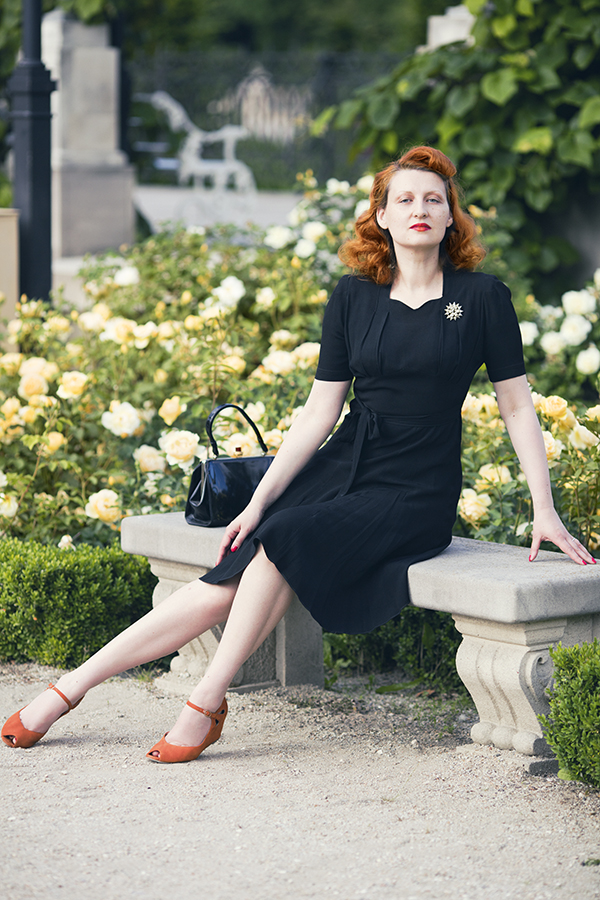

Over the years austerity restrictions became more relaxed which can be seen in the later designs of Utility garments, and I will be posting examples in due course.
ABOLITION OF CLOTHES RATIONING
Source: HC Deb 14 March 1949 vol 462 cc1738-441738
§The President of the Board of Trade (Mr. Harold Wilson)
“Mr. Speaker, with your permission I should like to inform the House that I have today signed an Order ending completely the clothes rationing system. From tomorrow morning coupons will no longer be required for the purchase of any kind of clothing or textiles.”
THE END OF THE UTILITY CLOTHING SCHEME – 1952
Utility clothing was made in Britain until 1952. Tired of the military silhouettes yearning for a change of style, women wanted nothing to do with clothes bearing the CC41 tag. The Utility Clothing Scheme was seen as a necessity rather than a choice, and once the rationing of clothing was abolished, it was time for a change.
A wardrobe change, perhaps, inspired by the 1947 Christian Dior’s “New Look” collection. Featuring long skirts and hourglass-shaped silhouettes that shocked the world but gave women hope for a new and better reality.
I can understand why the CC41 tag can bring negative connotations to those who had to wear it. I, however, appreciate it for its quality and beautiful designs that suit me rather well. And I will always be in search of yet another black dress or a suit to cater to my CC41 addiction.

I sincerely hope that you enjoyed reading the “A brief history of CC41-The Utility Clothing Scheme” article as much as I enjoyed writing it! If you would like to show your support for my blog, please consider donating to my book fund. Thank you!
Dominique x






